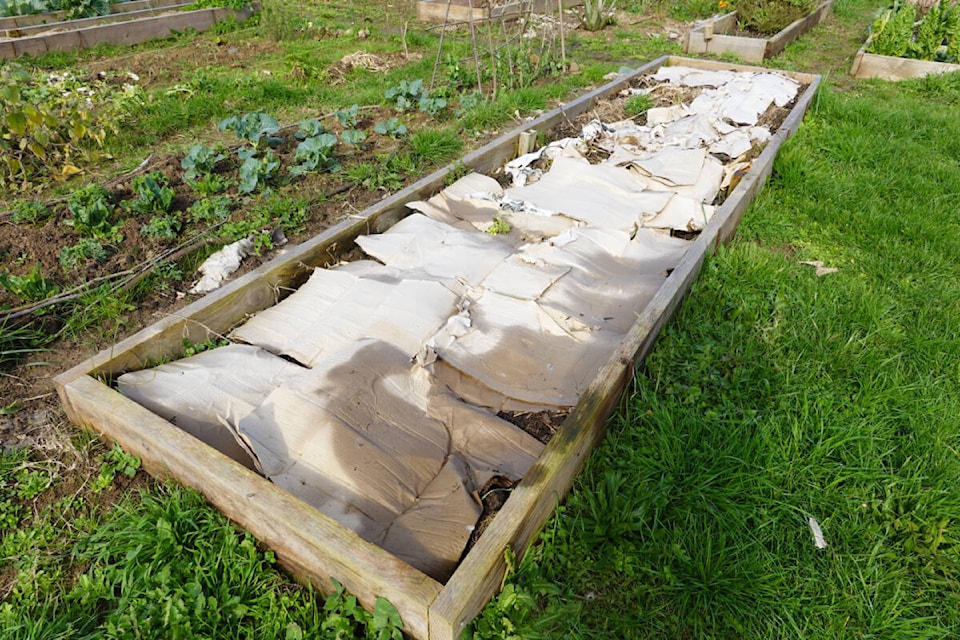BY LESLIE COX
Special to the Record
A recent headline in a gardening newsletter caught my eye. “Cardboard does not belong on your soil. Period.”
Whoa! Those are strong words. And, according to Dr. Linda Chalker-Scott, Washington State University’s extension urban horticulturist and professor of horticulture, they are true. With 25 years of researching, teaching and publishing on the topic of mulches, I think she likely knows a thing or two.
However, she freely admits there has not been much research done on mulches used in home landscapes other than the studies conducted at WSU, the results of which were published in 2019 after being subjected to peer review.
One study I found interesting was the carbon dioxide coefficient results in soils covered with different mulches. The bare soil (control) had the least impairment of gas movement. The soil mulched with wood chips had some gas movement impairment, then the cardboard-covered soil, the soil covered with landscape fabric and finally the soil with polyethylene mulch. This one had the most gas movement impairment.
Note: I should mention these tests were conducted on diverse soils such as those found in biologically intense landscapes…meaning they are typically filled with a wide variety of living organisms that have high oxygen demands.
Are you a fan of lasagna gardening, which is based on placing multiple layers of cardboard directly on top of the soil? You can likely attest to finding lots of earthworms underneath your cardboard, can’t you? A sure sign of healthy soil, right?
Well, Dr. Chalker-Scott will point out the earthworms are all gathering directly underneath the cardboard in their quest for oxygen. In fact, they should be scattered throughout the soil depth, making tunnels for the plant roots. (Short story of an earthworm’s job in the soil.) Worms on top of the soil are one sign of an unhealthy soil environment.
Now let’s look at the cardboard material itself.
There are, of course, numerous grades of cardboard available ranging from the boxes of goods bought online and delivered to your door through to the boxes containing your dinner at a fast-food restaurant. Most likely, it is the delivery box cardboard most gardeners use in their gardens, either to build their lasagna garden or simply laid down to suppress weeds. So, let’s dissect that cardboard type - more properly called containerboard or corrugated board.
First off, there are multiple layers in the construction of containerboard; starting with a thin layer of linerboard on either side of that accordion-like fluted cardboard. The linerboard may, or may not, be coated with a material to make it smooth and moisture repellent. It is this coating that prevents gases from moving between the atmosphere and soil. It also reduces the breakdown of the containerboard, further impacting the soil quality.
Did I mention the PFAs, the moisture retardant applied to some cardboard types? (PFAs is short for perfluoroalky and polyfluoroalkyl substances.) They are better known as “forever chemicals” and are found in a high percentage of paper wrappers and cardboard items.
Moisture retardant or not, chemicals have a way of leaching out, eventually. I have learned this fact through my work as a former pulp, paper and environmental technician. In particular, testing leachate running from the mill industrial dump into the Gold River.
In spite of this information, you may not be convinced containerboard is bad for your soil and garden. But hopefully, there is some food for thought on the “indestructibility” of containerboard, the effect of chemical leaching both into the soil and food plant intake, as well as the impact on the health of trillions of billions of soil organisms… not to mention your botanical treasures.
Stay tuned. More information on this topic in my next column.
Leslie Cox co-owns Growing Concern Cottage Garden in Black Creek. Her website is www.duchessofdirt.ca.
